Peter Donaldson , Ann Daly, Luca Ermini and Debra Bevitt August 2015: Genetics of Complex Disease. This book is for the 3rd (final) year Biomedical Science UG Degree and Biochemistry and Genetic in Medicine UG Degree modules (BMS3010, BGM3061) and the MRES module (MMB8014). Garland Science are a major publisher and part of the Taylor Francis Group. The Medical School has published many books with this publishing group authors of other books with Garland include: Tom Strachan, Lyle Armstrong, Patrick Chinnery and Judith Goodship.
ERDP development grant project update: A focus group of the influences of clinical teachers on GP trainees choice of career
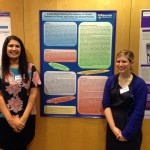 We are a GP Clinical Teaching Fellow, GP ITP and Primary Care Subdean currently working in the School of Medical Education and are currently involved in a project which will be looking at GP trainees’ experience of expressed opinions from clinical teachers and whether these had any influence on their decision to train as a GP.
We are a GP Clinical Teaching Fellow, GP ITP and Primary Care Subdean currently working in the School of Medical Education and are currently involved in a project which will be looking at GP trainees’ experience of expressed opinions from clinical teachers and whether these had any influence on their decision to train as a GP.
Currently there is a significant problem in GP training recruitment due to low filling of training posts. One factor which is thought to potentially influence career choice is expressed opinions from clinical teachers about their chose specialities. A recent survey by the RCGP (Royal College of General Practitioners) of GP Heads at medical schools and medical students suggested there exists hostility from some clinical teachers towards training in certain specialities such as general practice. Anecdotal evidence from GP trainees similarly suggests that their a high prevalence of negativity from under graduate tutors and consultants towards general practice as a career choice.
We would like to find out more about the experiences of GP trainees of comments from clinical teachers about general practice. We are currently awaiting ethics approval to run a pilot study which will test the feasibility of using focus groups to interview GP trainees regarding any positive and negative comments made about their career choice to them by clinical teachers, and whether this had any influence on their decision to train as a GP.
New GP trainees from two training programmes within the North, where the recruitment crisis is particularly acute, will be invited to participate in focus groups. Trainees will then be asked using a semi-structured question framework about their experiences of comments made to them, both positive and negative, from clinical teachers during medical school, foundation training and GP training as well as if this had any influence on their decision to train as a GP. Interviews will be recorded and then professionally transcribed. Thematic qualitative analysis will then be performed and the results used to inform interested parties locally and nationally. If successful we would then hope to expand the project to interview larger students numbers.
We are additionally hoping in future to extend our project by interviewing non-GP speciality trainees regarding their experience of expressed opinions about GP as well as their own chosen speciality and whether this had any bearing on their decision to train in non-GP specialities.
We recently presented an outline of our proposed project in the form of a poster presentation at the Society of Academic Primary Care North conference in the Lake District which generated a good amount of interest.
Dr Joanna Hall, Dr Kym Merritt and Dr Hugh Alberti, School of Medical Education
ERDP development grant project update: Interprofessional Education Conference
BACKGROUND
Patient safety is a key priority in the NHS and crucial for this is effective multidisciplinary teamworking. Thus, preparing students for collaborative teamwork in the clinical environment is essential. Interprofessional education, when two or more professions learn with, from and about each other to improve collaboration and quality of care, is seen as an effective mechanism to prepare professionals for teamwork in the clinical environment. This approach has become integrated into the MBBS degree programme at Newcastle University through strong collaborative links with the Pharmacy degree programme at the University of Sunderland.
We aim to further our students’ interprofessional education (IPE) experience with the development and delivery of a day-long conference for Stage 2 MBBS and Pharmacy degree students (~420 student in total). The conference will take the form of series of stimulating and innovative interprofessional workshops focused on key NHS priority areas, designed to strengthen learning around patient safety, antibiotic prescribing, surviving sepsis and safe interprofessional working practice. The conference format will be realised through the production of conference packs, stands from affiliated organisations and charities, lanyards, pre-reading material, an art exhibition produced on the conference theme by the students, lunch and refreshments. We will use a range of cutting edge teaching techniques to deliver the interprofessional sessions, such as use of high fidelity mannequins to simulate acute medical emergencies and team based learning exercises. A summary of the plan of work for the day is below.
PLAN OF WORK
This conference will run on the 11th March 2016 at Newcastle University Medical School.
The theme for the conference is effective management of infection and patient safety. We will use a range of educational tools to deliver 4 strands of work for the day:
1) Keynote lectures
We will start the day with a series of short keynote presentations from senior NHS staff highlighting the importance of effective interprofessional working for the management of infection and patient safety.
2) Choosing the right antibiotic seminar
This was our flagship IPE seminar developed for Stage 2 students and piloted and evaluated successfully in 2014. Students work in interdisciplinary teams to solve clinical problems around the selection and administration of antibiotics for meningitis and urinary tract infections.
3) Surviving sepsis
We have developed a team based learning exercise using SimMan (a high-fidelity virtual patient simulator), exploring the management of acute sepsis. The use of this virtual patient allows students to apply their shared knowledge to a simulated real-life emergency scenario and see the effects their treatment has on the patient in real time.
4) Patient safety incident analysis
This exercise collates information about patient safety incidents, which students will analyse in interprofessional teams to determine the human and other factors contributing to the incidents.
METHODOLOGY
I have set up an IPE Conference steering group that has met three times so far since July. The steering group consists of key Newcastle and Sunderland staff involved in organising the conference. Sunderland colleagues include Louise Statham, Alan Green and Lesley Scott. Newcastle colleagues include Elsa Randles, Jo Matthan and Andy Teodorczuk. We have identified a number of streams of work, and sub-groups are meeting outside of the main meetings to further these streams.
All sessions are interprofessional with medical and pharmacy students working through the tasks and scenarios together. Each session will be facilitated by one doctor and one pharmacist, except for the SimMan sepsis session which will additionally have a nurse facilitator. Students start and end the day together in the RB Green lecture theatre for the keynote lectures, and between are rotated around the three sessions of work (choosing the right antibiotic, surviving sepsis and patient safety incident analysis). We have 19 rooms running at once throughout the morning and afternoon sessions. Below is a summary of progress of some of the streams of work.
1) Recruit academic staff
We require 46 members of staff (half doctors, half pharmacists) to facilitate the teaching on the day (more if some tutors only do half a day). Elsa Randles is organising recruitment of the medical tutors and Louise Statham is coordinating recruitment of the pharmacy tutors.
2) Develop SimMan sepsis case + patient safety incident analysis
Jo Matthan is taking the lead in organising the SimMan sepsis case. She is working with Louise Statham and Alan Green on the materials. We piloted the session earlier this year with MBBS and Pharmacy students. This session will consist of a simulation of an elderly man who presents acutely unwell to the A and E department. Students need to work in interprofessional groups to identify whether the man is presenting with sepsis. They will need to work with national guidelines and the British National Formulary to decide on the most appropriate treatment and then prescribe this accurately.
Elsa Randles is taking the lead on organising the patient safety incident analysis session. Students will analyse the records of the elderly man who ends up in A and E with sepsis to identify a range of errors (human and other) which result in the man’s sepsis being missed at an earlier stage. This session will highlight the importance of good interprofessional working in the reduction of errors.
The bulk of the materials for these cases has been produced. Between now and January we are looking to collate all materials required (instructions, hospital admissions chart, prescription forms etc) ready for insertion into our workbooks for the day. Briefing notes and materials for the tutors are being produced alongside these.
3) Recruit keynote speakers + outside organisations to run stands
We have identified and approached pharmacy and medic keynote speakers who work within the NHS to speak on the importance of good interprofessional working practice and how this can impact on the outcome for a patient. We are awaiting confirmation.
We have approached a number of organisations about running stands on the day, to add to the verisimilitude of the conference approach. So far the Medical Protection Society (MPS) and the British Pharmacological Society (who co-manage the Prescribing Safety Assessment that Stage 5 MBBS students must take) have agreed to participate in the day and we are waiting to hear back from other organisations.
4) Art competition
All conferences materials will be contained in cloth bags and we are running a competition to designs the logo for the conference which will be printed on all conference bags. All participating Stage 2 students (Newcastle and Sunderland) have been emailed and invited to submit designs. The winning design will be decided by a panel of students and tutors from Newcastle and Sunderland universities and will be printed on all bags. In addition the winning entrant will get £50 and two runners up will get £25, courtesy of MPS. A selection of the best remaining artwork will be displayed in the exhibition area of the conference.
5) Administrative organisation
As part of the conference we are providing lunch and refreshments for students and rotating them around 20 teaching rooms. All students will be provided with lanyards detailing their timetable and marking them as either a medic or pharmacist so they can easily self-organise into interprofessional groups. Students will be provided with a conference pack containing the workbooks and materials needed for each session. Organisation of all the above is a large administrative task.
I worked with central timetabling earlier in the year and with the Faculty Office to book rooms for teaching and rooms for staff and students to have their lunch in. I’m now working with the (much appreciated) support of the Medical Student Office to organise things like the timetables, lunch, conference bag collation and collection.
I’ve had meetings with MedSoc and put them in contact with the student society for Pharmacy at Sunderland to organise a social after event. The desire for more social contact outside the IPE teaching sessions was something which has been fed back after pervious IPE work.
6) Evaluation
A mixed methods approach to evaluation will be undertaken. We are producing a set of qualitative and quantitative questions to evaluate the event. This includes evaluation of the teaching sessions as well as an evaluation of the added benefit of the conference approach (as opposed to running a series of teaching sessions). We will run this evaluation on the day (forms will be present in the conference packs) and we will employ a Newcastle Work Experience student intern in March to assist in inputting and analysing the data. We aim to hold a post event focus group to explore the themes within the free text.
Dr Clare Guilding, Project Lead, School of Medical Education
The New Dental Education Research Group
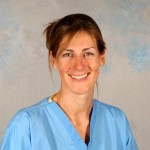 On the 30th September 12 enthusiastic educational researchers met for the inaugural meeting of DERG – the Dental Education Research Group.
On the 30th September 12 enthusiastic educational researchers met for the inaugural meeting of DERG – the Dental Education Research Group.
The meeting started with everyone introducing themselves and giving a summary of their previous experience within educational research. It very quickly became apparent that whilst the nature and experience of our research varied enormously, there was a considerable amount of activity within the School of Dental Sciences and a real enthusiasm and passion within the staff present. The meeting then went on to describe our mission and define our objectives.
DERG’s mission is to establish the School of Dental Sciences as a leading contributor to dental educational research whilst also informing the enhancement, development and delivery of high quality dental education.
In so doing DERG aspires to improve our own students’ learners experience and the quality of dental graduates.
In order to achieve this aim the following objectives have been identified;
- To create a ‘forum’ for educational research within the School of Dental Sciences, Newcastle University that will promote, support and facilitate the delivery of high quality educational research in the context of the study of dentistry.
- To identify strategic research priorities, funding opportunities and complimentary collaborations.
- To nurture ‘dental educators’ who are new to educational research through shared experience.
The Dental Education Research Group initially aims to embrace three very broad themes – in order to be as inclusive as possible;
The Individual Learner & Teacher; including learner wellbeing, peer learning & team working, developing and assessing professional qualities, educational transitions, developing the teacher
The Curriculum; including integration, theory, development, delivery and assessment
The Wider World; including internationalisation, patient involvement in assessment, feedback and selection.
In order to establish these aims we have set up a Virtual Research Environment and arranged a session were we can all meet to upload our individual profiles and understand how best to use this facility. We are arranging local workshops on ethical considerations and educational research guidelines and are already providing mentoring and support to junior colleagues setting out on their first educational research.
Key to our objectives is our wish to establish complimentary collaborations and to build on the good practice and experience of colleagues within the Faculty, the ERDP and the University.
We would very much welcome contact from anyone interested in collaborative working in the future.
Professor Janice Ellis, School of Dental Sciences
ULTSEC Innovation Fund 2015/16
There are two strands of funding available, for Responsive and Strategic projects.
Responsive project proposal submission deadlines
Spring: Thursday 24 March 2016, 5pm
Summer: Friday 20 May 2016, 5pm
Strategic project proposal submission deadlines
Semester 1: Friday 15 January 2016, 5pm
Semester 2: Friday 20 May 2016, 5pm
Read the full details from the Learning and Teaching Development Service.
Bioscience Education Summit
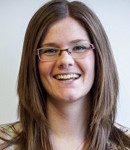 Dr Damian Parry and I recently attended the OUP (Oxford University Press) Bioscience Education Summit which this year took place in Ulster University, Belfast. After an entertaining “bucket list” icebreaker session ran by Dr Parry himself the conference broke out into the first of two key discussion forums. Jonathan Crowe from OUP led an interesting session on the role of publishers in higher education and what, if any, additional support they could be offering to enhance student learning. Most attendees suggested that if publishers could increase the number and breadth of case study style questions then this would be a benefit. However the more thought provoking conversations in this session focused on the responsibility of publishers to support students developing critical thinking skills by placing greater emphasis on the range of research evidence used to establish a scientific theory. One compelling comment from a delegate has lingered in my mind “it is too hard for a student to even comprehend that one bullet point in your lecture slides might be the result of 5-10 years of research”. I thought this was a very interesting point and wondered how much of this is truly covered in our research-led and research-informed teaching?
Dr Damian Parry and I recently attended the OUP (Oxford University Press) Bioscience Education Summit which this year took place in Ulster University, Belfast. After an entertaining “bucket list” icebreaker session ran by Dr Parry himself the conference broke out into the first of two key discussion forums. Jonathan Crowe from OUP led an interesting session on the role of publishers in higher education and what, if any, additional support they could be offering to enhance student learning. Most attendees suggested that if publishers could increase the number and breadth of case study style questions then this would be a benefit. However the more thought provoking conversations in this session focused on the responsibility of publishers to support students developing critical thinking skills by placing greater emphasis on the range of research evidence used to establish a scientific theory. One compelling comment from a delegate has lingered in my mind “it is too hard for a student to even comprehend that one bullet point in your lecture slides might be the result of 5-10 years of research”. I thought this was a very interesting point and wondered how much of this is truly covered in our research-led and research-informed teaching?
The final discussion forum of the summit explored the different forms of teaching observations being performed within Higher Education Institutions. The session posed the pertinent question “why and who for”? This led to an interesting debate on whether such observations should be purely for sharing best teaching practice or as a quality control measure or in fact if both could, and should, be examined in just one observation. This raised further questions on how and if dissemination of such observations occurs, the balance between senior and junior staff and their roles within the observation as well as the frequency of the schemes. As you would expect the potential use of teaching observations in the reported Teaching Excellence Framework (TEF) was also the subject of many conversations. But what this session really highlighted was the vast differences in schemes across the sector and again to provoke thought and further discussion ended by asking delegates to design their ideal, TEF usable observation scheme.
The conference had 10 short swap shop sessions for attendees to share their teaching practices and current pedagogic research projects. Dr Parry presented his collaborative project with Northumbria and Teesside University on undergraduate’s perceptions of scientists and I presented my work on the Feedback Foghorn (funded by the UTLSEC Innovation fund) which is being piloted with SBMS students this academic year. As the Higher Education Academy has disbanded its subject centres, this summit was an excellent opportunity to network with Bioscience colleagues from across the UK and Ireland and I would encourage anyone to consider presenting work at such a friendly and informative event in the future.
On a final note I would like to pose the same key questions to the ERDP newsletter readers:
- Should publishers take greater responsibility for supporting critical thinking skills?
- Do students understand the timeline and range of research required to establish a scientific theory?
- What would be your ideal version of a teaching observation for the TEF?
Dr Lindsey Ferrie, School of Biomedical Sciences
The start of something good!
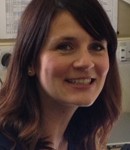 I attended the first Enhancing Student Learning through Innovative Scholarship Conference which took place in Durham on July 16-17th for teaching-focused academics. The conference had 2 main focuses based on innovation in teaching and the role and progression of the teaching-focused academic; both topics extremely key to me at this point in my career. I and the other 120 delegates were presented with an array of innovative methods used in teaching across universities of the UK. ‘Students as Partners’ was a key theme; we heard from academics who had involved students in the whole development of their own sciences skills course, digital video production by students to enhance educational engagement, design and implementation of the visually exciting ‘Soton Brain hub’ in a collaboration between students and teaching fellows in Medicine and the utilisation of near-peer teaching.
I attended the first Enhancing Student Learning through Innovative Scholarship Conference which took place in Durham on July 16-17th for teaching-focused academics. The conference had 2 main focuses based on innovation in teaching and the role and progression of the teaching-focused academic; both topics extremely key to me at this point in my career. I and the other 120 delegates were presented with an array of innovative methods used in teaching across universities of the UK. ‘Students as Partners’ was a key theme; we heard from academics who had involved students in the whole development of their own sciences skills course, digital video production by students to enhance educational engagement, design and implementation of the visually exciting ‘Soton Brain hub’ in a collaboration between students and teaching fellows in Medicine and the utilisation of near-peer teaching.
I also entered a world of academic politics around what it means to be a teaching fellow especially in a research intensive university and although examples of discrimination towards the role were highlighted there was equal positivity with great examples of success. One such success was the latest appointment to Professor of fellow David Read at the University of Southampton. I was particularly impressed with his work on methods of self-assessment for the chemistry student. A truly enthusiastic teacher, his published work was very engaging and motivating to me. David will be presenting some of his work to us as part of the FUERDP seminar series.
With the ‘TEF’ on the horizon there was an element of anxiousness and uncertainty but also that of comforting positivity and excitement in a community of people who really did care about teaching and were improving the learning experience. As I had belonged once as a postdoc in the research circuits beyond the university, I now felt that relationship again with another community of practice. These are exciting times to be a teacher in HE and I encourage you to get involved. #ESLIS15.
The Enhancing Student Learning through Innovative Scholarship Conference, 2016 will take place at the University of Southampton and will come to Newcastle in 2017. The website address for the conference is http://community.dur.ac.uk/teachingfocussed.academicconference/
Dr Luisa Wakeling, School of Dental Sciences
Director’s update Autumn 2015
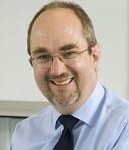 Welcome to our first newsletter of the new academic year. I hope that you have all had a summer both productive and restful in equal measure in preparation for the new academic year.
Welcome to our first newsletter of the new academic year. I hope that you have all had a summer both productive and restful in equal measure in preparation for the new academic year.
In this newsletter, as a step towards helping us all understand what educational activities colleagues are engaged in across the four Teaching Schools, Gwyneth Doherty-Sneddon, Head of School has outlined what is happening in the School of Psychology and we’ve included updates from current projects in SME and BMS. If you have a project in progress that you would like to tell us about we would be very pleased to hear from you.
Our events programme is also getting underway with both the Journal Club and the L&T seminar programme starting once more. We have been very pleased to see the consistently strong attendance at the Journal Club last year and the vigorous discussions about learning and teaching that the presenters and the papers have stimulated. Our first seminar this year was in September when we had a very interesting talk from Concha Martinez from the Dental School in Complutense University, Madrid discussing the development of dental education in Spain. Our next seminar from Lois Neal is on a topic many of you have asked to hear more about which is ethical approval for education projects. I am sure this will stimulate a high level of interest. As previously advertised our seminars later in the term are to be given by Stephen Billett and Hamish Macleod. In Semester 2 we have Pauline Kneale (PVCT Plymouth), David Read (Southampton) and Dave Lewis (Leeds) already lined up but there are still spaces for further speakers so if you have ideas for speakers please let us know. Also this year sees a new round of the EQUATE programme starting at Faculty level with a strong representation from Faculty of Medical Sciences staff. We will have more to say about EQUATE in later editions of the newsletter.
Meanwhile, a second call is out for applications for ERDP development grants. Our successful applications from the first round can be seen in this newsletter and we look forward to receiving more applications from you.
There are many education research resources available on the internet and we would not aspire to provide a comprehensive or even a recommended listing of what is out there. What we can do is to provide a platform for us to share those resources with each other that we have found helpful or useful.
In that spirit I would like to draw your attention to two new resources for medical education research that Jane Stewart is recommending as being particularly good.
- Researching Medical Education (Cleland, J and Durning SJ eds) is a recently published textbook presented by ASME and AMEE.
- NIHR have produced a brief description of some funding sources available from them which they have illustrated with three case studies including one from Newcastle, Ellen Tullo.
Again I hope you enjoy our newsletter and find it both informative and useful. If you would like to write something for us there is no need to wait to be asked, please just send it in. If there is something that you would like us to include that we are not covering already then tell us.
Professor Stephen McHanwell, Director ERDP
CfLaT seminar: Clara Pereira Coutinho
Assessing student learning in Higher Education: the potential of alternative methods
Wednesday 28 October, 16.30-18.00
Dr Clara Pereira Coutinho, Center for Child Studies Minho University – Braga – Portugal.
Within the context of change in Higher Education, there is growing recognition of the importance of assessment as a key factor for quality teaching and learning and academic achievement. Existing international literature points to the need to examine further the impact of different methods, especially the so called alternative methods, for students’ learning and achievement as well as for teaching methods in classroom, as evidence of their effectiveness is still scarce. Also of importance is the need to
better understand the ways in which different methods of assessment lead to different learning approaches and academic achievement. Earlier work has shown that assessment plays a key role on how students spend their time and what they regard as important, and this can have either positive or negative influences on their learning. This is even more crucial at a time of great pressure and change upon Higher Education institutions, resulting from the Bologna process which emphasises the need
for a more student centred paradigm, one which recognises the need for independent learning and development of both technical and soft skills. Within this context, it is essential to get to know what has changed in higher education in terms of teaching and learning and, especially in terms of assessment and feedback, as these have implications for the development of teaching learning process and academic achievement. Literature has also highlighted that more empirical work is needed in order to provide sufficient data to develop a comparative profile of assessment practices used in HE institutions in different courses and different countries. The main goal of this project is then to examine what is known and what needs to be known in this regard by exploring the questions that remain answered. In this seminar we will present the state of the art on this issue, combining a review of existing literature on the use of different methods and perspectives to explore assessment in HE in order to identify and disseminate best practices, in particular those involving ICT.
Key Words: Higher Education, Assessment, Alternative Methods, ICT.
To register for the seminar please email sue.robson@ncl.ac.uk
BMS Student perceptions of scientists
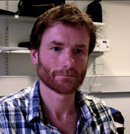 Concerns over the number of women opting to study science (and STEM subjects in general) at all levels of education is often highlighted by the media. Equally, looking at the statistics, the number who study science but then do not opt to pursue related careers is disappointing. Although the numbers for this are evidenced by the data the reasons why this is the case are often more anecdotal.
Concerns over the number of women opting to study science (and STEM subjects in general) at all levels of education is often highlighted by the media. Equally, looking at the statistics, the number who study science but then do not opt to pursue related careers is disappointing. Although the numbers for this are evidenced by the data the reasons why this is the case are often more anecdotal.
Encouragingly, in the UK, the number of female students taking science at school has been rising since 2009 (WISE, 2014), although this trend seems to now have plateaued. Of the students taking an A’ level in biology, 59% are female, but the percentage taking chemistry is lower at 48%, and only 21% of students taking physics are female.
These proportions are replicated at undergraduate level with the data showing that uptake for bioscience subjects is still well balanced, with 59% of those graduating with degrees in bioscience being women. In postgraduate study the percentage drops to 56% at masters level, and 52%, those achieving doctorates. In chemistry the numbers are slightly lower with 49% of graduates gaining masters being female, and of those completing a doctorate 39% (Matson 2013).
In terms of employment the statistics are less easy to align by subject (often grouped as STEM), but according to WISE (2014) 42% of ‘Science Professionals’ are female and just 28.5% of ‘Research and Development Managers’ are female. Much of the data for employment encompasses the wide range of STEM subjects incorporating data for engineering which has a more male bias (table 1)
| % Female | ||
| qualification achieved | Biological Sciences | engineering |
| GCSE | 45* | – |
| A’Level | 59* | 21 (physics)* |
| Bachelors | 59** | 18** |
| Masters | 56** | 23** |
| PhD | 52** | 22** |
Table 1: % females taking Biological Science and Engineering subjects
*DfE (2009)
**WISE 2014
It can be seen therefore that women graduate with degrees in the biosciences in comparable numbers to men, but there then seems to be a barrier to them following related careers, so the reason is not a lack of recruitment to education but in continuing into employment in science. The aim of this study is to uncover whether a potential reason may lie in their initial perceptions and how these are altered during undergraduate study. Here I will report some initial findings of a study that is being carried out at both Newcastle and Northumberland University’s in both bioscience and engineering cohorts.
The start point for this study involved asking fresher students, in the first weeks of their university career, to fill in a questionnaire. Initially they were asked demographic questions to establish the student’s background and gender (for example whether they were 1st generation university students and if their parents or guardians had a STEM background). We then asked them to ‘Draw a Scientist’. The instructions were minimal:
“Q. Please spend a few moments thinking of a ‘xxx’ and the activities they undertake on a day to day basis, where and how they work etc. Then draw your vision of that person in the box below. Please use labels if you wish. Your artistic skills are not important- a labeled stickperson is as informative as a work of art!”.
The images were assessed for ‘level of stereotype’ using a published methodology. It is not possible to go into the data in depth in this report, but some main findings related to gender were:
- Gender was indeterminate in half the images
- Where gender was identifiable, the majority of images portray a single female
- A small number of images portrayed groups (both male(s) & female(s)), but these were only drawn by female respondents
- Only one male respondent drew a female image
- Females drew twice as many female images as male images
- The ‘grooming’ in images is gender biased with images identified as being female being more ‘neat’
The outstanding finding was that male participants almost exclusively drew male or gender non-specific scientists whilst female students drew both genders.
Other significant conclusions related to demographics. Although parental education and occupational status seems to make a difference, there is no straightforward association between STEM background and reported level of influence on motivation to study STEM subject. In contrast to what is seen to happen at this early stage of their scientific career there was very positive indication that the students intended to remain in STEM with the majority seeming to have an awareness of what their career might involve.
This is work carried out with University of Northumberland and was lead by Dr Helen Hooper
DfE (2009) Subject and course choices at ages 14 and 16 amongst young people in England: Insights from behavioural economics
https://www.gov.uk/government/uploads/system/uploads/attachment_data/file/182677/DFE-RR160.pdf
Matson, J. (2013) Scientific American Women Are Earning Greater Share of STEM Degrees, but Doctorates Remain Gender-Skewed Volume 308 (5)
WISE (2014) Wise Uk Statistics 2014 https://www.wisecampaign.org.uk/uploads/wise/files/WISE_UK_Statistics_2014.pdf
Dr Damian Parry, School of Biomedical Sciences
